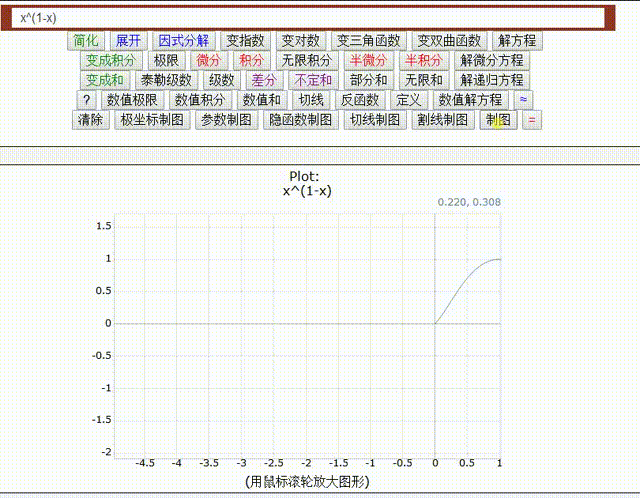 +
+  +
+  +
+  =
= 
 +
+  +
+  +
+  =
= 
For Re(a)>0, we also have the integral representation
Γ(a,z)=`int_z^oo e^(-t) t^(a-1) dt`
`gamma(a,0,z)=int_0^z e^(-t) t^(a-1) dt` = Γ(a)−Γ(a,z)
`gamma(a,c,z)=int_c^z e^(-t) t^(a-1) dt` = Γ(a,c)−Γ(a,z)
Some authors refer to it's incomplete Gamma function as the complementary or upper incomplete gamma function,
and call smallgamma(a,x)=Gamma(a)-Gamma(a,z) as the incomplete or lower incomplete small gamma function.
• The incomplete Gamma function is defined as:
Γ(a,z)=Γ(a)−za 1F1(a,1+a,−z)a
where 1F1 is the confluent hypergeometric function (in it notation, 1F1(a,1+a,-z) = hypergeom([a],[1+a],-z)).
• The gamma function extends the classical factorial function to the complex plane: gamma( n ) = (n-1)!. In general, it does not distinguish these two functions,
although the factorial function will evaluate for any positive integer, while for integer n, gamma(n) will evaluate only if n is not too large. Use expand to force gamma(n) to evaluate.
• You can enter the command gamma using either the 1-D or 2-D calling sequence. For example, gamma(5) is equivalent to Γ(5).
• For positive real arguments z, the lngamma function is defined by:
lnΓ(z)=ln(Γ(z))
For complex z, it evaluates the principal branch of the log-gamma function, which is defined by analytic continuation from the positive real axis. Each of the points z=0,-1,-2,..., is a singularity and a branch point, and the union of the branch cuts is the negative real axis. On the branch cuts, the values of lngamma(z) are determined by continuity from above. (Note, therefore, that lngamma <> ln(gamma(z)) in general.)
> Γ(1) 1 (1) > Γ(5)=4! 24=24 (2) > Γ(−1.4)=(−2.4)! 2.659271873=2.659271873 (3) > Γ(4,−1) 2e (4) > Γ(1.0+2.5I) 0.06687277236+0.04032263512I (5) > Γ(1.0+2.5I,2.0+3.5I) 0.01314614269+0.006253182683I (6) > loggamma(1.234+2.345I) −2.132556911+0.7097892285I (7) > lngamma(−1.5)≠ln(Γ(−1.5)) 0.8600470154−6.283185307I≠0.8600470153 (8)